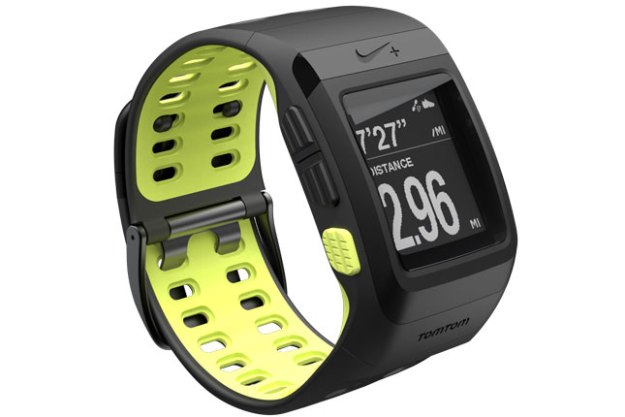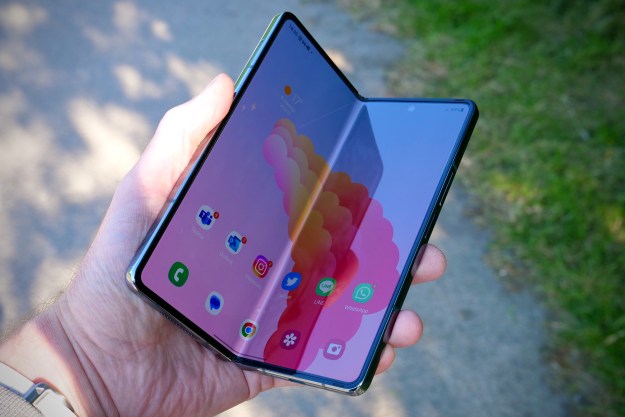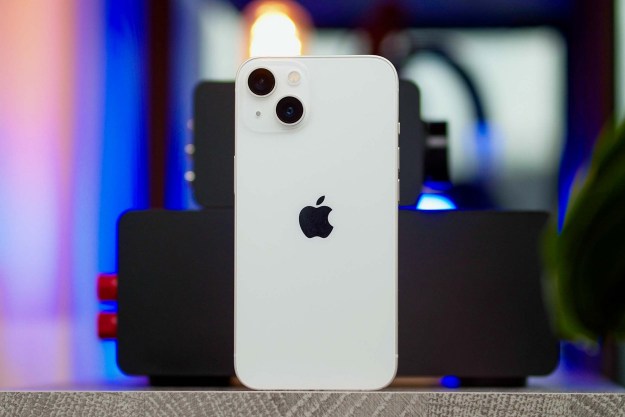
“The Nike+ SportWatch is a single-minded device that does what it does very well, but won’t get much use when it’s not collecting sweat.”
- Comfortable, smart design
- Built-in USB connector
- Powerful, intuitive Web-based interface
- Long battery life
- Accurate GPS by TomTom
- Reasonably affordable
- Not practical for everyday wear
- Using Nike+ sensor requires Nike shoes
- Little flexibility and zero non-running features
The Nike+ SportWatch GPS is not the first sports watch to plug into a computer, the first to offer GPS, or the first to put your data online where you can share, compare and brag to friends. So how did Nike saunter back from CES this year with an armload of awards and a queue of eager customers?
Like the Apple of the athletic world, Nike’s not looking to do it first, it’s looking to do it simpler, sleeker, and with a marketing budget that would make Kobe Bryant blush. The SportWatch GPS takes the same tech previously wrapped in button-studded watches for diehard competitors and makes tracking runs novel, easy and just plain fun for folks who wouldn’t know Prefontaine from Plantar Fasciitis.
Design
Though Nike makes some sharp conventional timepieces that look as good with khakis as they do with nylon running shorts, the SportWatch is not one of them. From the rigid rubber watchband and overly beefy face to the fluorescent “volt yellow” highlights, this is clearly an athletic watch through and through.

The display on the SportWatch uses the same inverted white-on-black color scheme that a lot of trendier sports watches use, which can be easier to read in the sun. It’s also surprisingly dense with pixels, so numbers and even tiny print look smooth and easy to read.
Features
The same running-centric design that dictates the SportWatch’s styling applies to the features Nike has crammed in: If it doesn’t have anything to do with running, the SportWatch won’t do it. Even the most basic features you could find on a kid’s digital watch, like an hourly chime or alarm, have been stripped out. There’s no question Nike could have included these features, but we suspect it was an intentional move to cut the clutter and avoid anything that could interfere with the running settings.

Setup
Part of the beauty of owning a watch that plugs into a computer comes from actually setting it up on the computer, rather than spending twenty minutes reading a matchbook-sized manual and clicking buttons the size of pinheads to set the time. The first time you plug the SportWatch in, it prompts you to download Nike+ Connect software, a lean and unobtrusive app that interfaces with the watch. Really, you’ll only use it to configure the watch and upload data, the meat and potatoes reside online. Consequently, Connect requires you to create a Nike+ account the first time you use it, which serves as repository for everything you’ll add from then on. After that, it’s a simple matter of choosing your preferred distance units, entering your weight, gender and a few other specifics, and you’re off and running. Literally.
 Testing and usage
Testing and usage
Tracking a trip around block with the SportWatch GPS is as easy as selecting “run” from the four options on its main screen. Sort of. Before you start trotting down the driveway, you’ll need to wait for the watch to sync up with a nearby GPS satellite, which took surprisingly long in some cases — up to two minutes. We used the extra time to stretch, but getting amped up for a run then idly waiting by for your watch to get GPS signal can be a buzzkill.
The SportWatch can talk with Nike’s shoe sensors as well, which comes in handy indoors or in areas where the GPS receiver can lose signal, like dense woods. We never had any issue with the watch losing signal, but keep in mind you’ll need a pair of Nike kicks to plant the sensor in if you do plan to use it, cramping your choice of footwear.
As you run, the SportWatch displays four vitals: elapsed time, mileage, pace and calories burned, which are calculated based on your weight input on setup. One “favorite” stat is permanently displayed in huge print that’s easy to read with a quick glance, while the others need to be manually cycled through with buttons. Nike keeps the interface idiotproof: two buttons to scroll up and down and a bright yellow “select” button.
The interface may be dead simple, but it also ends up lacking flexibility. For instance, you can’t pick your favorite stat to display big on the watch, you need to set it on the computer. The pace also always reads in mile times (ex. 4’ 40”), with no option for absolute speeds (ex. 5.6mph). Most runners will prefer it this way, but it seems silly not to offer an alternative like miles per hour, which could come in handy on a bike. No, it’s not a cycling watch, but when it’s only a tweak of the firmware away from serving as one, the rigid bias toward running can be aggravating.
In true Nike fashion, the SportWatch serves as much as a motivational tool as a statkeeper. When we kicked in our training run at the end, it recognized the boost in pace, congratulating us with a “Nice Finish!” Demolish a previous record and it lets you know. You can even turn on “run reminders” to have your watch nag you to take it for a run if you’ve been slacking.
Fun as it is to see the miles rack up as you pound pavement, the real function comes when you get home. Plug the watch in and it will automatically upload your results to your Nike+ account, where you can probe more into them. You can view a bar graph of mileage by day of the week, see pace plotted linearly like an EKG, and most importantly, see any map overlaid on

In short, the SportWatch takes running and turns it into almost something of an online game akin to FarmVille, where every step you take is logged for fun. Companies like Garmin have long offered all the graphing you could want, but Nike takes the social, competitive and training aspects to new highs with an interface that will make even the most casual runners want to get out and start logging more miles.
Battery life
If you’ve ever left a GPS tracking app open on a smartphone only to find it dead in a matter of hours, you know how hard GPS is on batteries. Fortunately the SportWatch has a built-in rechargeable battery that fills up via the USB plug every time you reconnect it to upload data. After three runs, we saw battery drop from full to about ¾ full, which should be plenty for even the most frequent runners.
Conclusion
Whether you want to start logging your adventure runs, turn your boring neighborhood loop into a race with friends thousands of miles away, or just need a motivational tool to get you off the couch, the SportWatch GPS will do it. Nike clearly knows its audience, and has loaded the SportWatch and its online counterpart with smart features catering precisely to them. Just don’t plan to wear it to your next gala or even check out your max speed on your bicycle: The SportWatch is a single-minded device that does what it does very well, but won’t get much use when it’s not collecting sweat.
Highs:
- Comfortable, smart design
- Built-in USB connector
- Powerful, intuitive Web-based interface
- Long battery life
- Accurate GPS by TomTom
- Reasonably affordable
Lows:
- Not practical for everyday wear
- Using Nike+ sensor requires Nike shoes
- Little flexibility and zero non-running features




